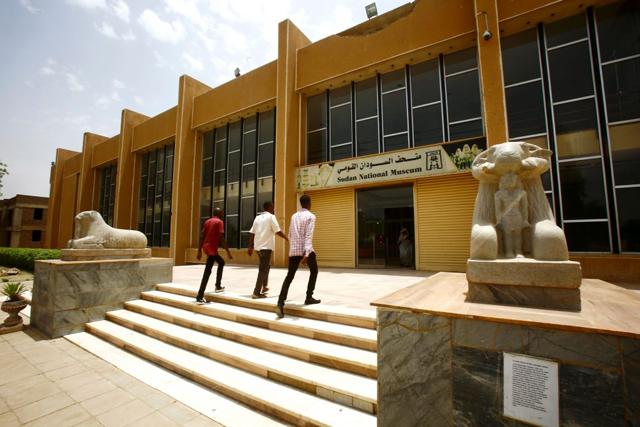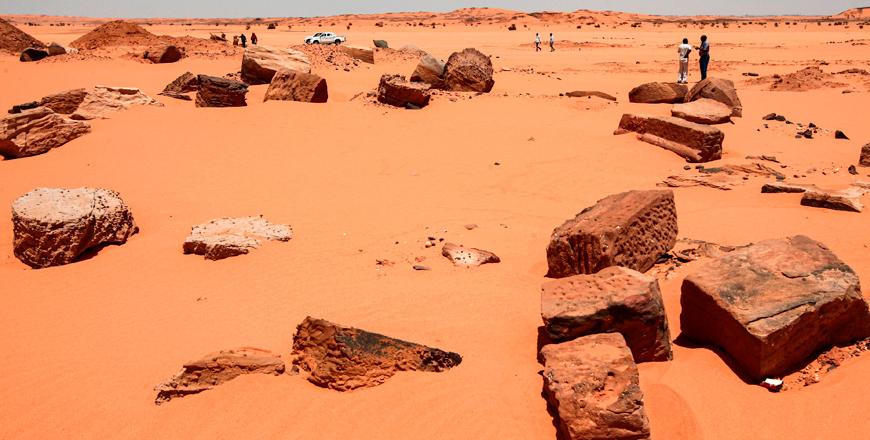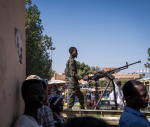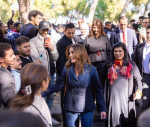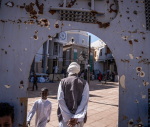You are here
Nation in peril: War in Sudan is devastating its cultural heritage
By Sophie Constantin - Aug 26,2024 - Last updated at Aug 26,2024
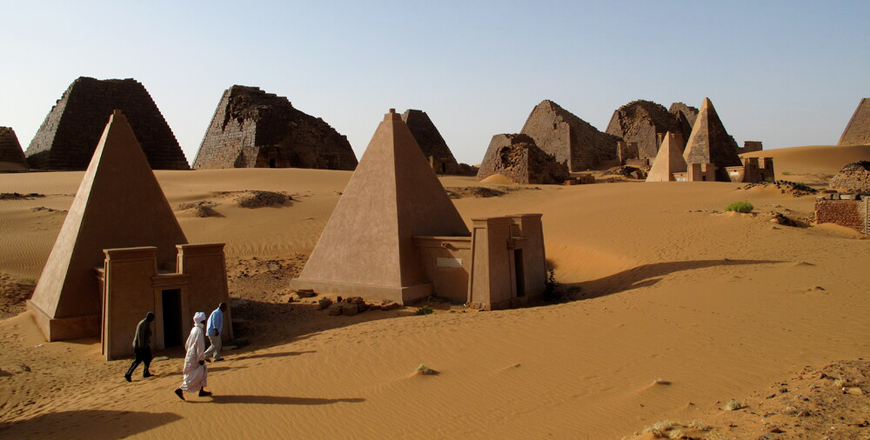
Islands of Meroe, in Sudan, inscribed on the UNESCO World Heritage List (Photo courtesy of UNESCO)
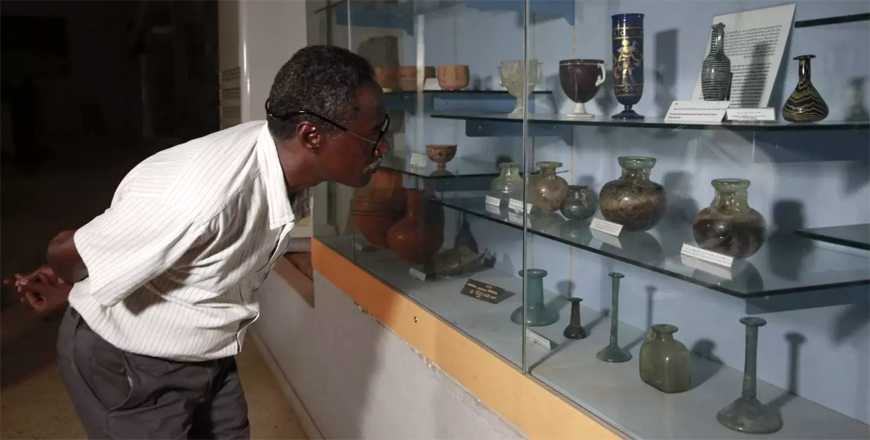
AMMAN — The war that erupted between the Sudanese Armed Forces and the Rapid Support Forces in Khartoum in April 2023 has not only created one of the world’s largest humanitarian crisis in but has also led to the catastrophic destruction of Sudan’s cultural heritage.
As the conflict spreads across the country, nearly 50 million Sudanese are in grave danger, with both human lives and Sudan’s historical and cultural legacy hanging in the balance. The International Organisation for Migration warns that the number of internally displaced persons in Sudan could soon surpass 10 million, with women and children under five making up a significant portion of the displaced population.
Sudan is now enduring one of the most severe hunger crises in history. The World Food Programme reported that over 755,000 Sudanese face imminent famine, and more than 25 million are struggling with acute hunger, risking malnutrition and death.
Beyond the targeted destruction of hospitals, schools, the assault on Sudan’s cultural heritage appears to be more than just collateral damage of war — it seems as a deliberate attempt to erase the rich history that defines the nation. UNESCO has confirmed the looting and vandalisation of museums, cultural centres and institutions, threatening the memory of thousands of years of civilisation.
Legacy under siege
Sudan is home to a variety of cultural and historical sites that reflect its long and complex history. The nation’s heritage is a mosaic of influences from Ancient Nubia, Pharaonic Egypt, Christian Kingdoms (such as Nobatia, Makuria, Alodia), Islamic civilisations (like the Funj and Darfur Sultanates), as well as Ottoman and Mahdist, and more.
This cultural landscape has been shaped over centuries by the diverse civilisations that have inhabited the region. It includes not only tangible sites but also intangible heritage such as music, oral traditions and religious practices.
This cultural diversity is a vital part of Sudan’s national identity and is crucial for the country’s social cohesion. The loss of these cultural assets would be a devastating blow to the Sudanese people and to humanity as a whole.
Monitoring the cultural damage
In April 2024, UNESCO issued a statement confirming that it is closely monitoring reports of damage to several key cultural sites, including the Sudan Natural History Museum, the Sudanese National Museum, the National Ethnographic Museum and the Republican Palace Museum in Khartoum, as well as several museums in the Darfur region.
Through its “Heritage Emergency Fund”, UNESCO is working to protect the components of Sudan’s two World Heritage Sites, “Gebel Barkal and the Sites of the Napatan Region”, and “Archaeological Sites of the Island of Meroe”. Additionally, it is focusing on five museums designated as priorities by the National Corporation of Antiquities and Museums.
The Sudan Heritage Protection Initiative
The Sudan Heritage Protection Initiative (SHPI), launched in May 2023 by the NGO Heritage for Peace, is also tracking, monitoring and assessing the cultural damage in Sudan.
In its three reports, released in June 2023, November 2023 and August 2024, the SHPI detailed irreplaceable losses across museums and heritage buildings. The second report highlighted the escalating conflict and displacement that have made it increasingly difficult to obtain and verify information, particularly in Khartoum State –a critical area for museums, archives, universities, libraries, art galleries, and more. “Violations against cultural property have not ceased,” the latest report declared.
Museums in the crossfire
Museums across Sudan have suffered severe damage due to the conflict. The Sudan National Museum, for instance, has sustained damaged to two structures containing the ancient Egyptian temple of Buhen and a wall from the ancient Egyptian temple of Aksha.
The Sudan Ethnographic Museum’s northern building has also been damaged, while the Beit Khalifa Museum has been occupied by militias who looted rare historical utensils and manuscripts. Other museums, such as the Darfur Museum in Nyala and Sultan Ali Dinar Museum in Fasher, have also suffered partial damage.
According to SHPI’s second report, the situation surrounding the museums remains dire, as the employees are unable to access the buildings to assess the extent of the damage. Since April 2023, the staff of the National Museum of Sudan has been unable to enter the building, which has been caught in the crossfire. The report noted that the police forces had to withdraw due to the conflict, leaving the museum unprotected. “Snipers have been spotted on the roof of the museum, indicating that forces are still present within the premises of the museum,” the report stated.
Without guards, police, security surveillance or fire alarm systems, Sudanese museums remain vulnerable to looting and vandalism. The Gezira Museum, in Wad Medani, and the Sinnar Museum, which houses artefacts from the Islamic Kingdom of Sinnar and other historical periods, are particularly at risk. “It is imperative to relocate these artefacts to a secure location, immediately,” urged Heritage for Peace in its SHPI report, adding that looting gangs have become prevalent in the capital and antiquities-smuggling operations may soon emerge.
Threats to archaeological sites
Archaeological sites in Sudan have not been spared from the ravages of the war. Fighting has broken out on several sites, leading to vandalism, destruction, looting, and theft at the Naqa Archaeological Site and Musawwarat Sufra. Both sites are now surrounded by landmines and military camps, making them inaccessible and further jeopardising their preservation.
The collapse of site monitoring and maintenance efforts at the Meroe Pyramids poses a serious threat to their integrity. An increase in uncontrolled visitors has led to graffiti on the pyramids’ walls and the collapse of stone blocks due to climbing, the report stated.
Additionally, the main threat to the pyramids of Meroe is the accumulation of sand dunes, which causes severe abrasion of the ancient surfaces, erasing the drawings and paintings. The latest rain season exacerbated the situation, as rainwater seeped through gaps in the walls, damaging the inscriptions and distinctive images within.
Destruction of archives, cultural centres and sacred buildings
The conflict has also wreaked havoc on Sudan’s archives, cultural centres, and sacred buildings. The archive of Sudan’s National Television and Radio of Sudan has been vandalised and the fate of the National Records Office remains uncertain, although many sources suggest significant damages, according to SHPI’s reports.
Churches and Mosques have also been targeted, with the Church of Wad Madani’s library destroyed and the Atab Mosque bombed.
As stated by SHPI, the Abdul Karim Mirghani Cultural Centre in Khartoum “now lies in ruins”, and the Downtown Gallery in Khartoum has been stormed by armed groups, resulting in the partial destruction of the paintings and other art works.
Natural reserves, such as Dinder National Park and Jebel Dair Reserve, are now surrounded by intense fighting and lie in the midst of ongoing battles.
Call for action
The targeted destruction of Sudan’s cultural heritage in this war is an immeasurable loss for the world. The deliberate erasure of Sudan’s history and culture threatens to sever the ties that connect the Sudanese people to their past, robbing future generations of their heritage. As the conflict rages on, the international community must urgently act to protect what remains of Sudan’s irreplaceable cultural legacy before it is lost forever.
Related Articles
AMMAN — Amid one of the world’s largest humanitarian crises, Sudan’s civil war has brought another devastating consequence: the potential ex
JABEL MARAGHA, Sudan — When a team of archaeologists deep in the deserts of Sudan arrived at the ancient site of Jabel Maragha last month, t
The small, steep pyramids rising up from the desert hills of northern Sudan resemble those in neighbouring Egypt, but unlike the famed pyramids of Giza, the Sudanese site is largely deserted.


